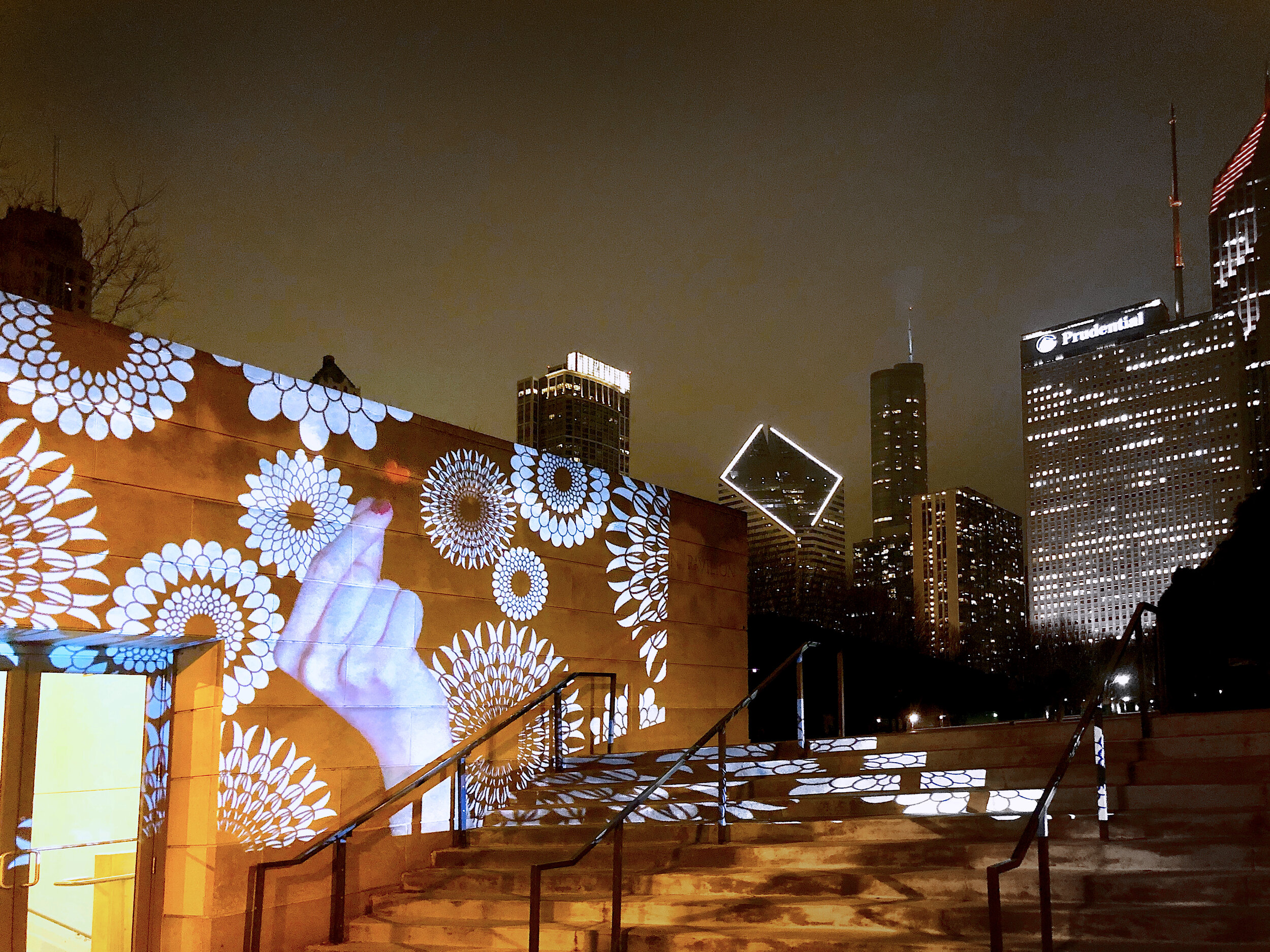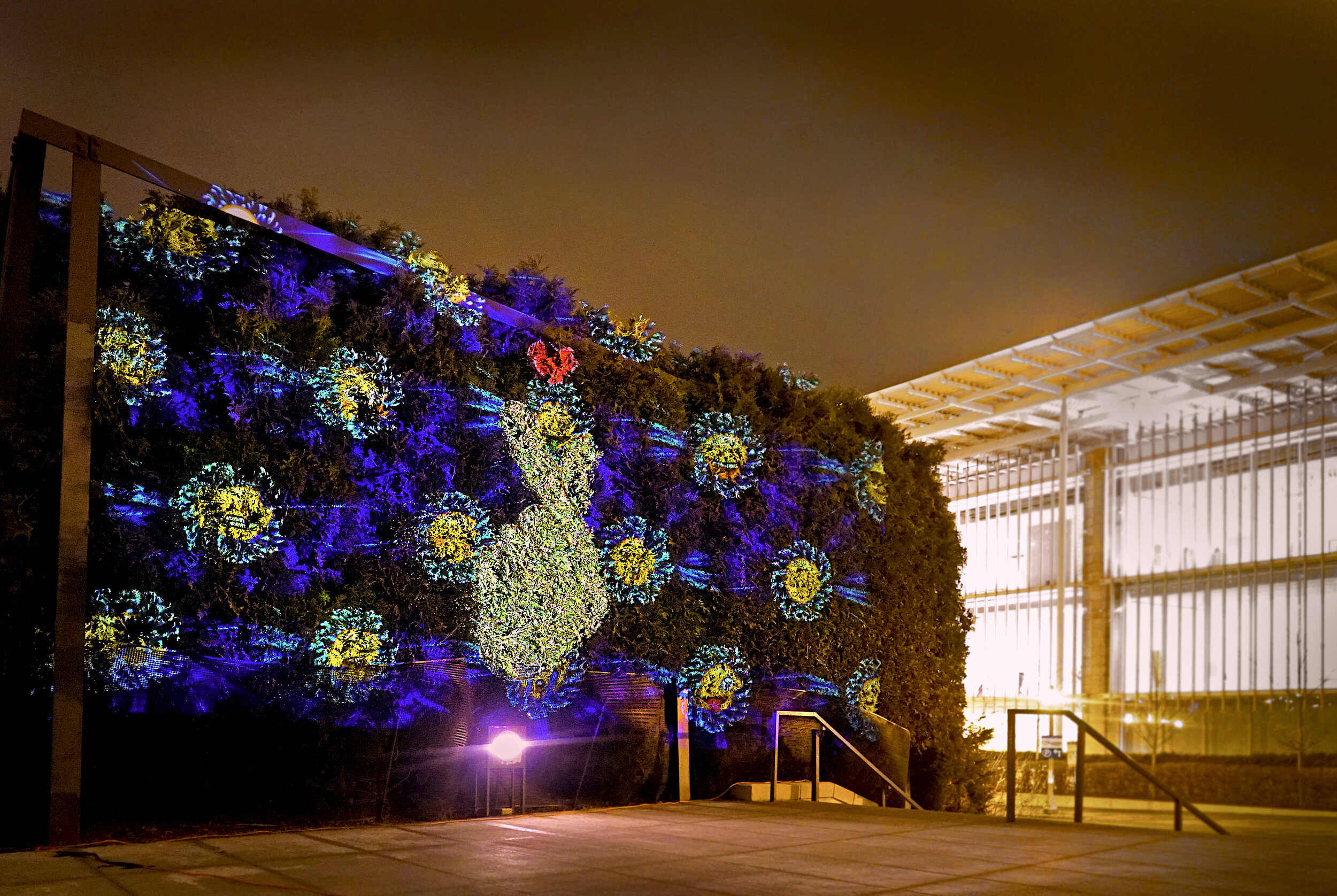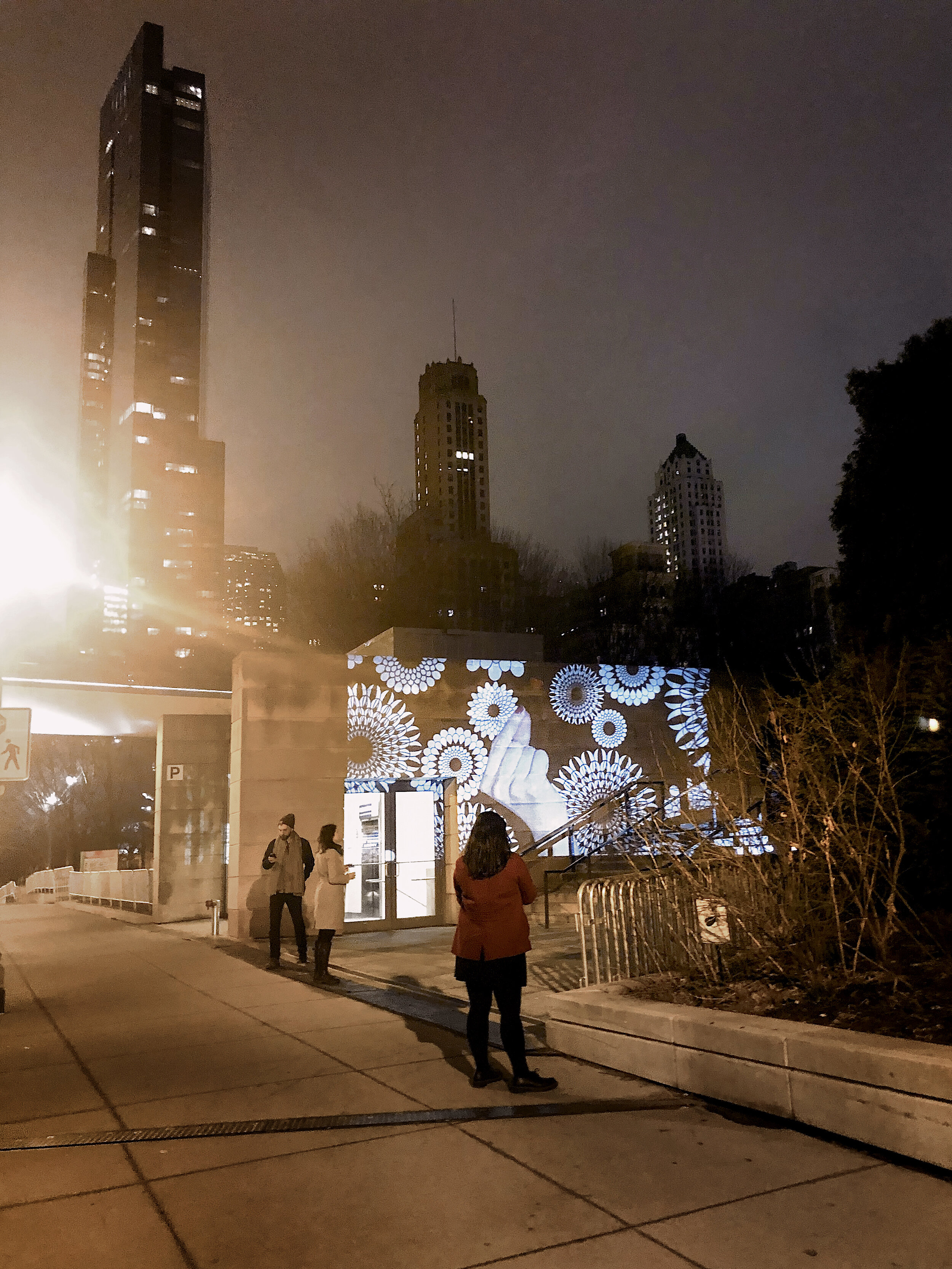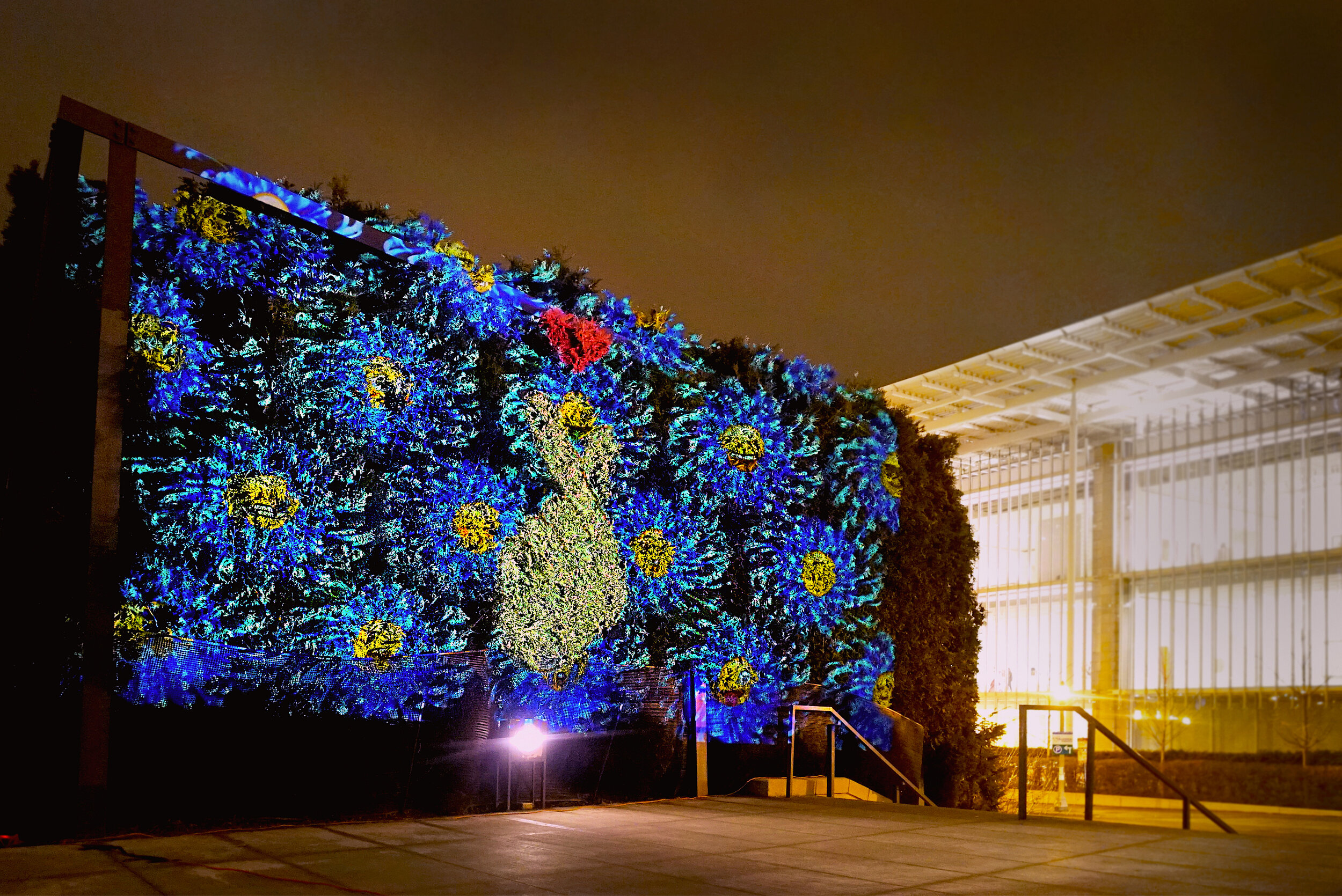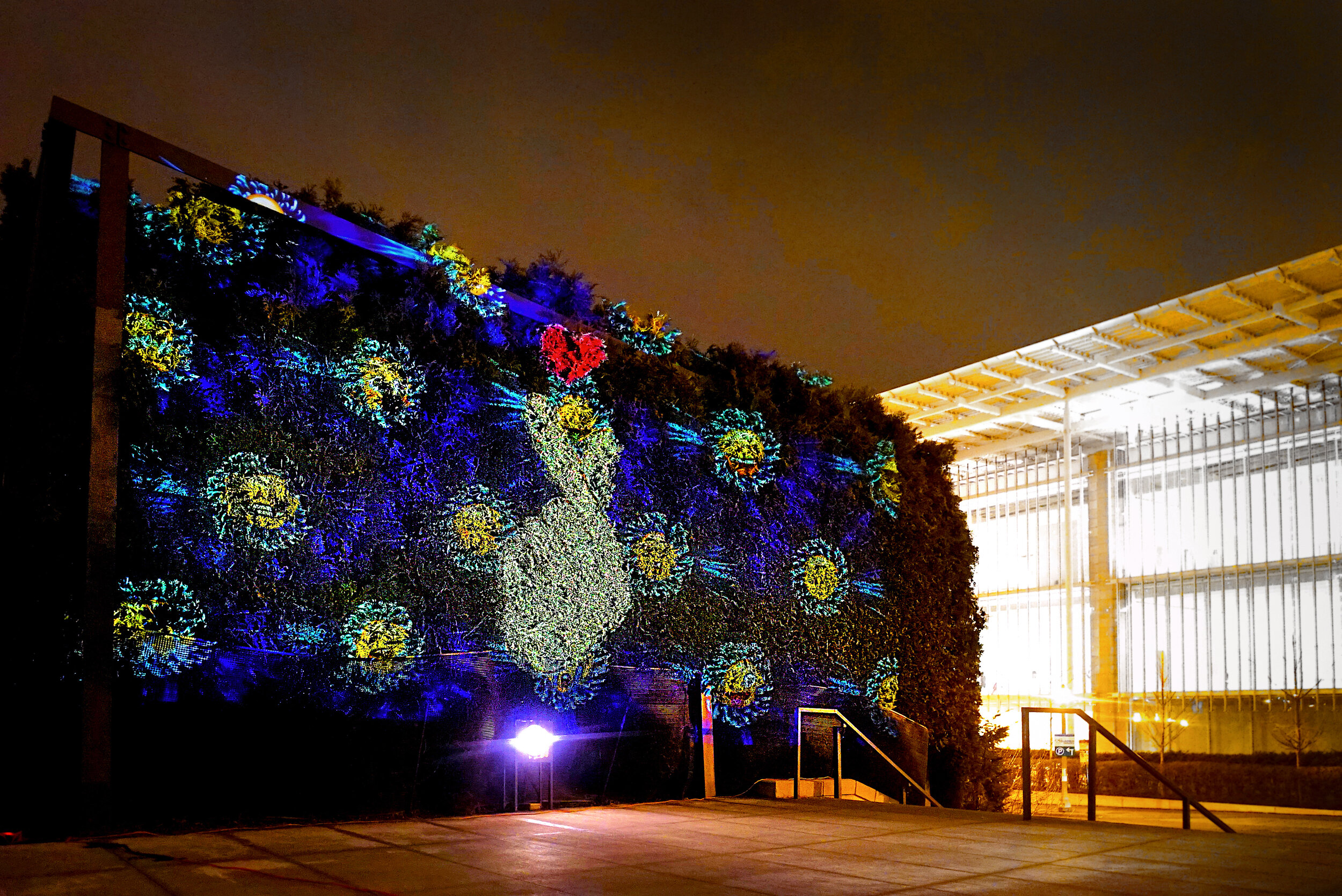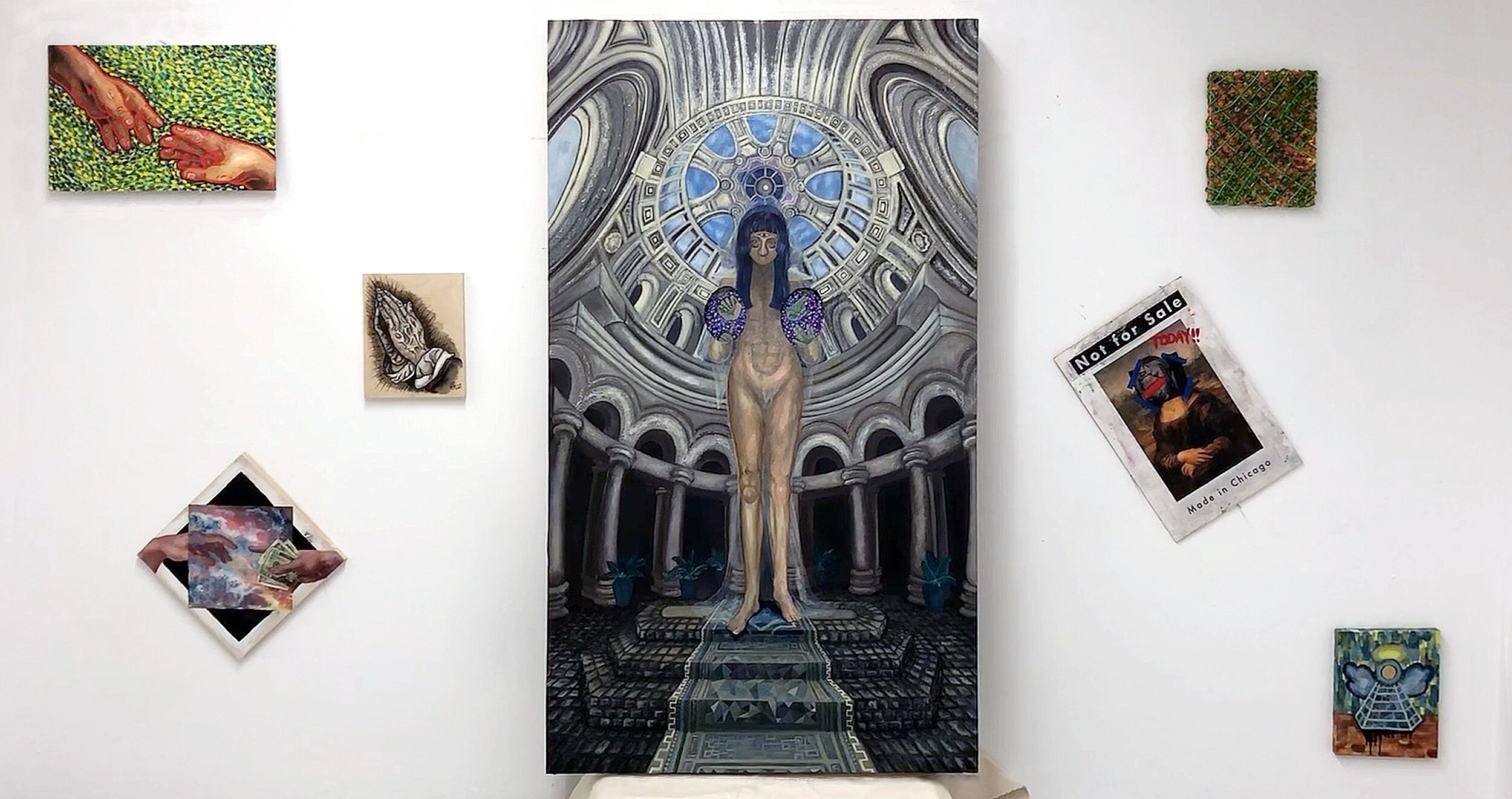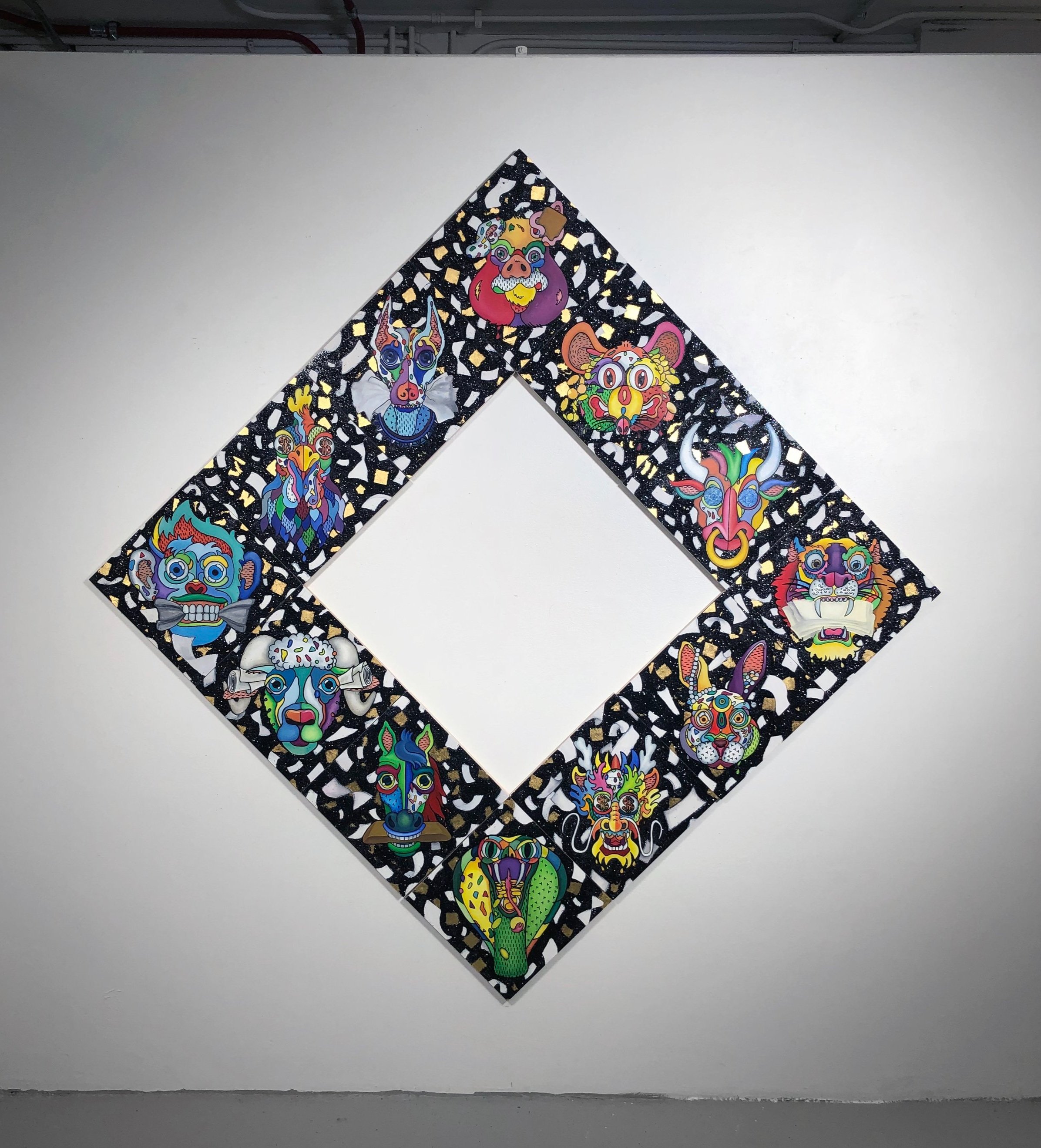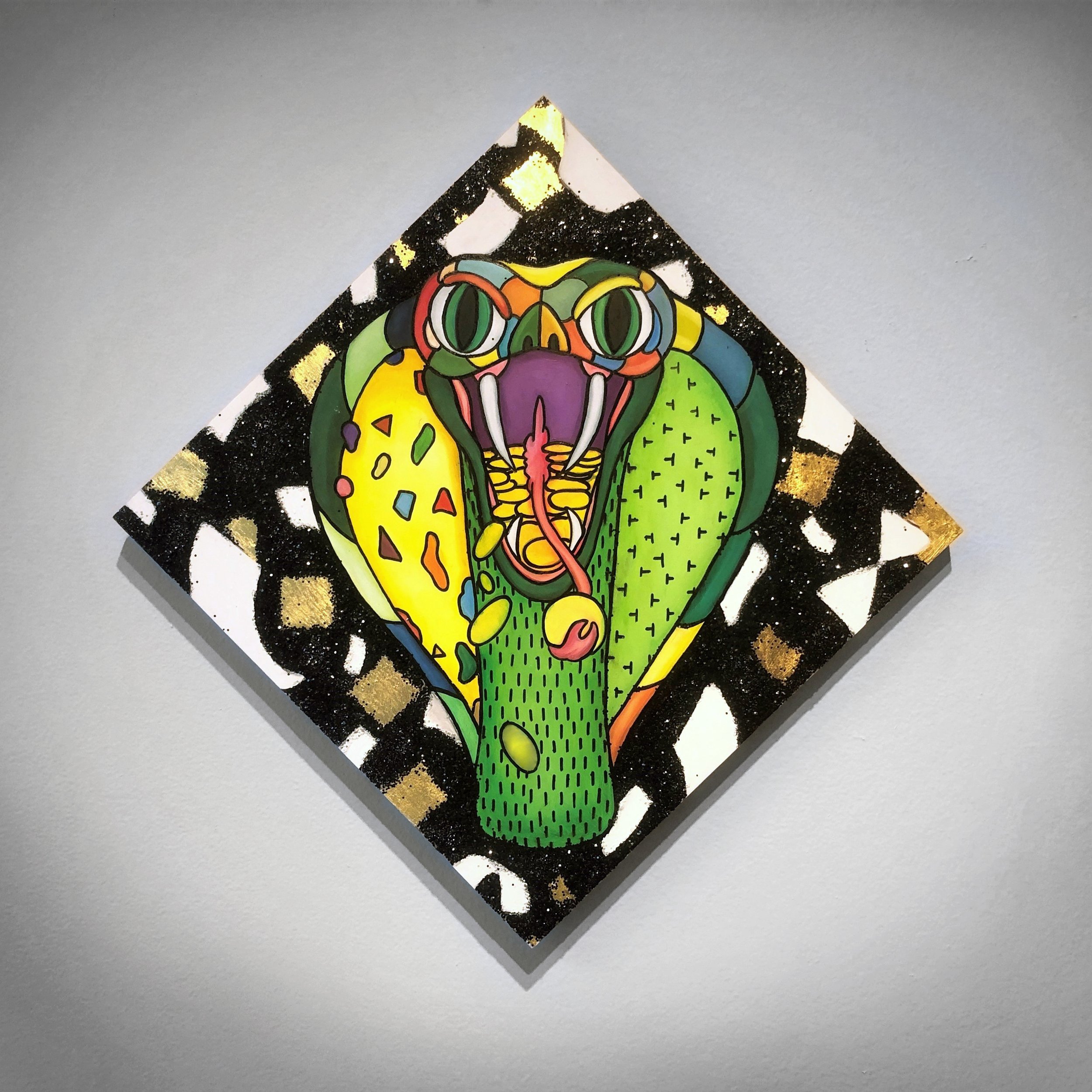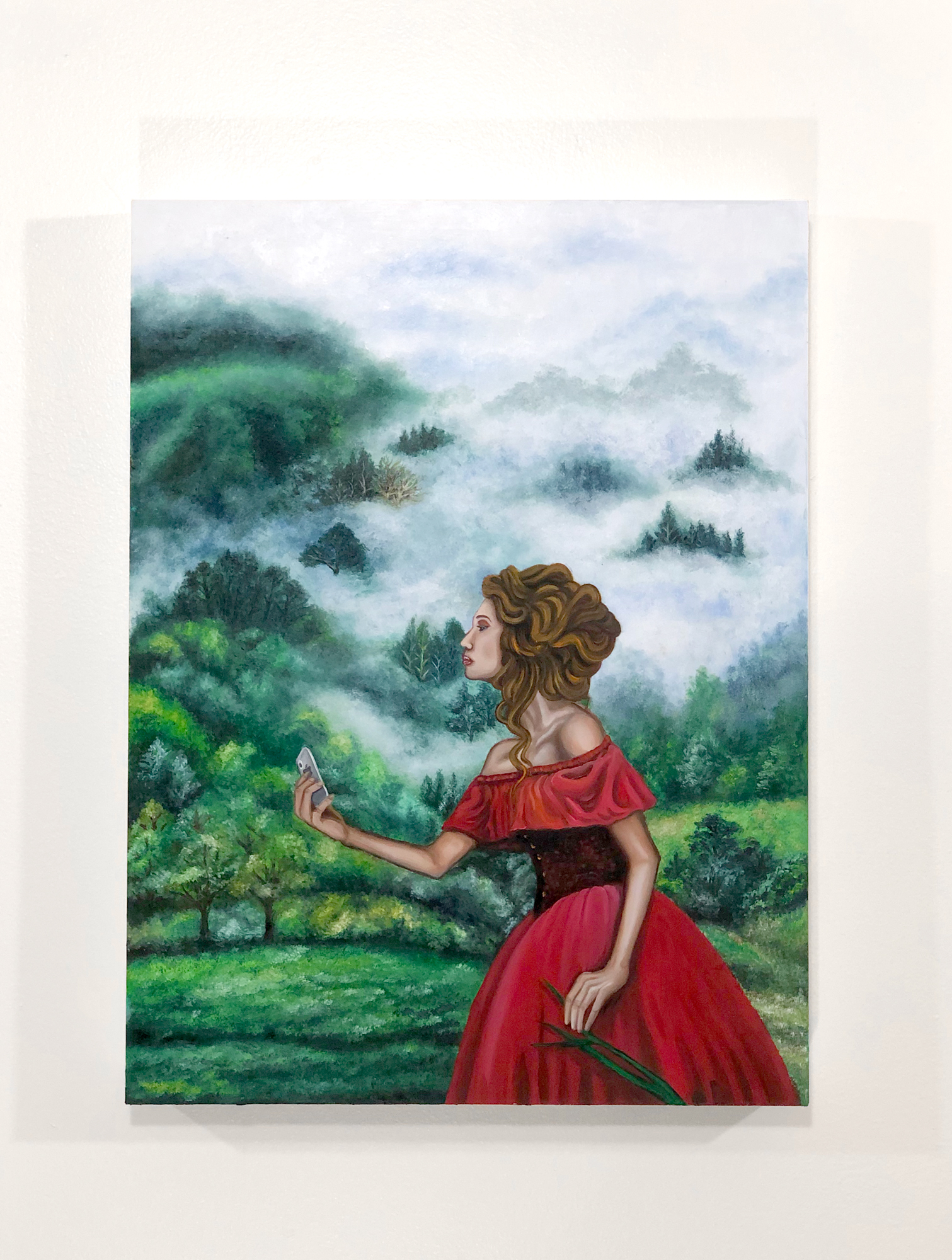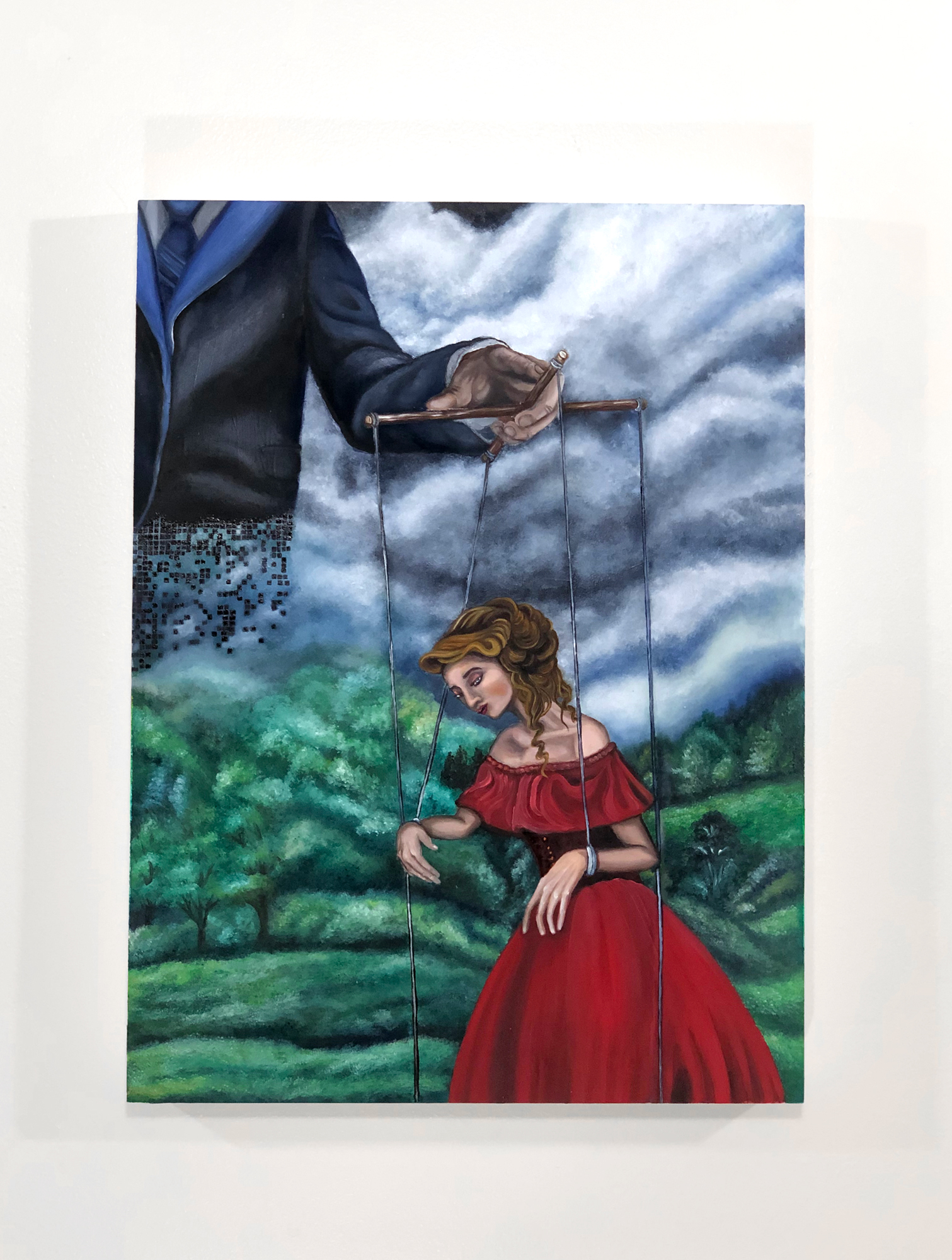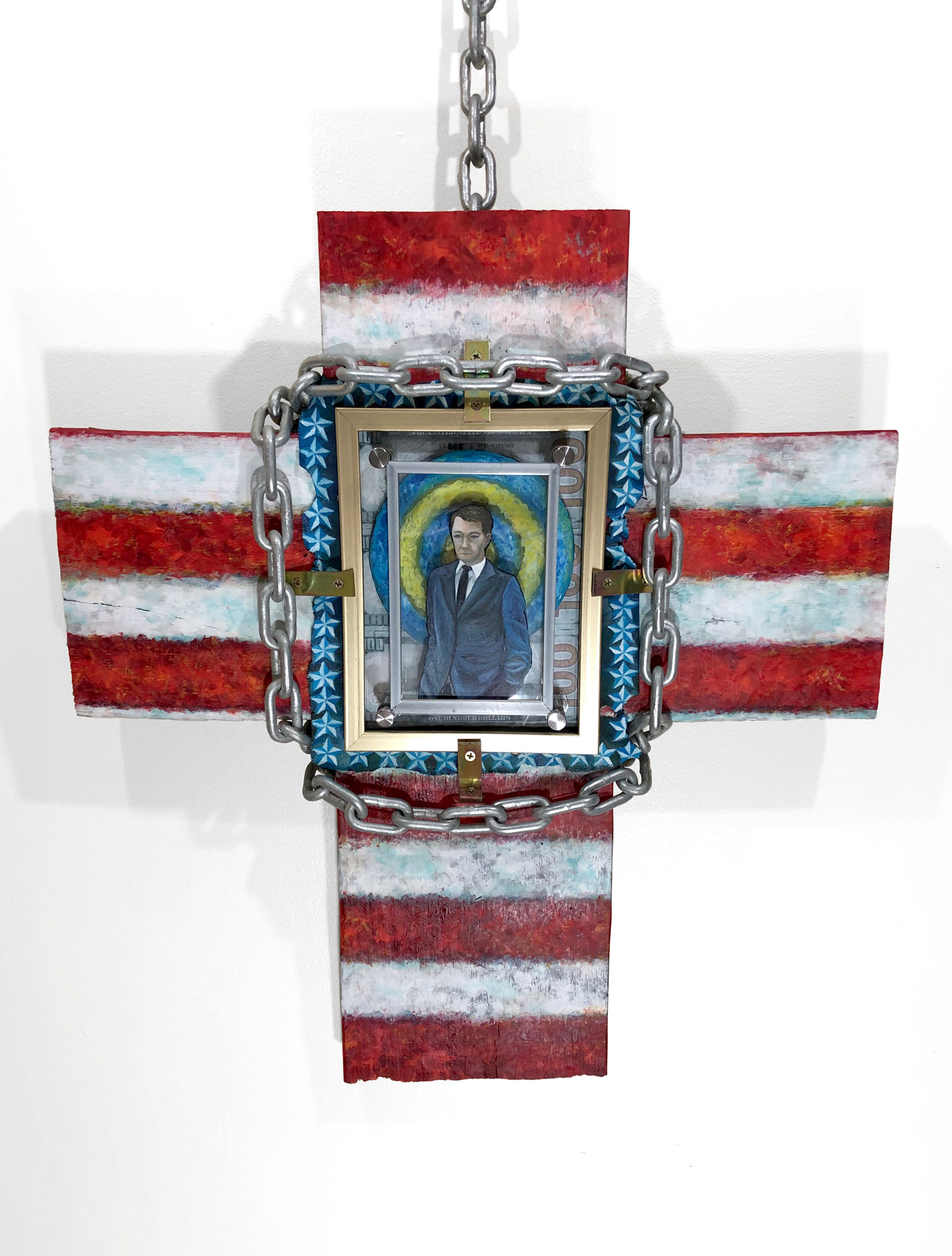Untitled, Chicago.
(No.1 & No. 2)
video projection
14 x 15 ft
This project is a two-channel projection working in conjunction with the Public Light and Space class of SAIC’s Art & Technology Department. Untitled, Chicago is a video projection/installation giving life to the cold and barren Lurie Garden of Millennium Park during the lonely winter of Chicago. The projections use the city flower of Chicago, the chrysanthemum, to illuminate the entrance to the gardens and activate the space into a scene of transition between seasons. Untitled, Chicago, No. 1 projects blooming emoji-con chrysanthemums and emoji-styled hands to speak to Chicago’s urban setting. As a hub for international visitors, the emoji-chrysanthemum, Cherubs, act as a universal language understandable by all visitors to the gardens. As a counterpart to the social media symbolism of Untitled, Chicago, No. 1, Untitled, Chicago, No. 2 welcomes spring with a humanistic quality. Utilizing video of the artist’s hand and geometric chrysanthemum patterns it continues the motifs of the installation in a reworked presentation.
Untitled, Chicago, was presented on March 12th, 2020 at Lurie Garden of Millennium Park, Chicago, IL.
Original Projection Video File:


